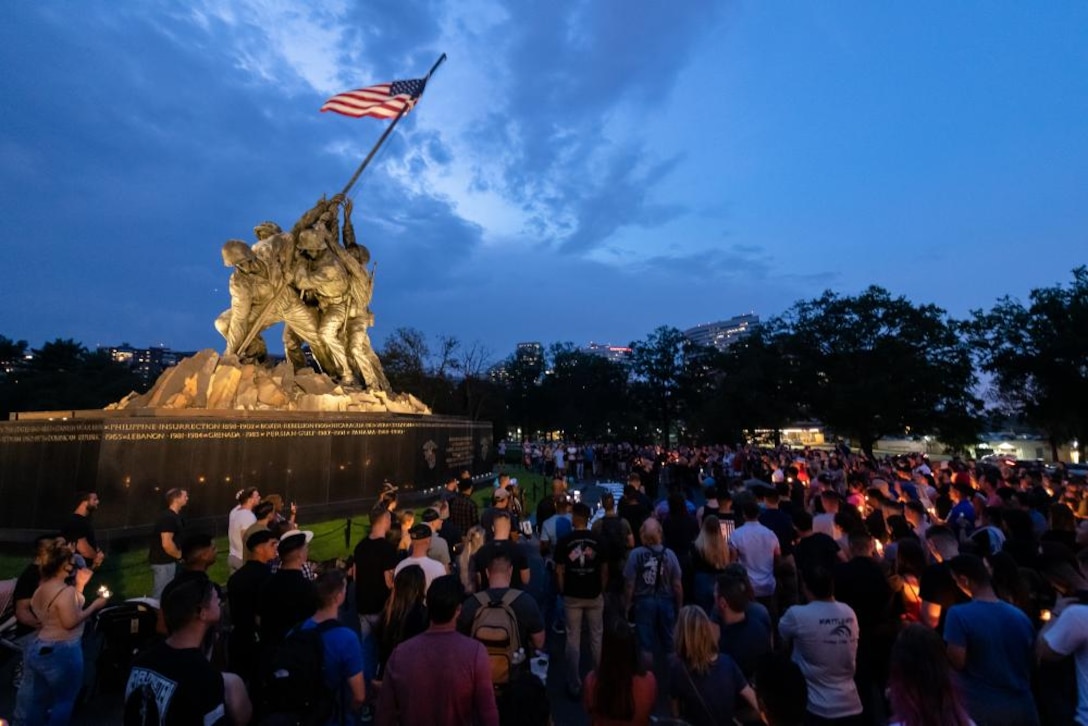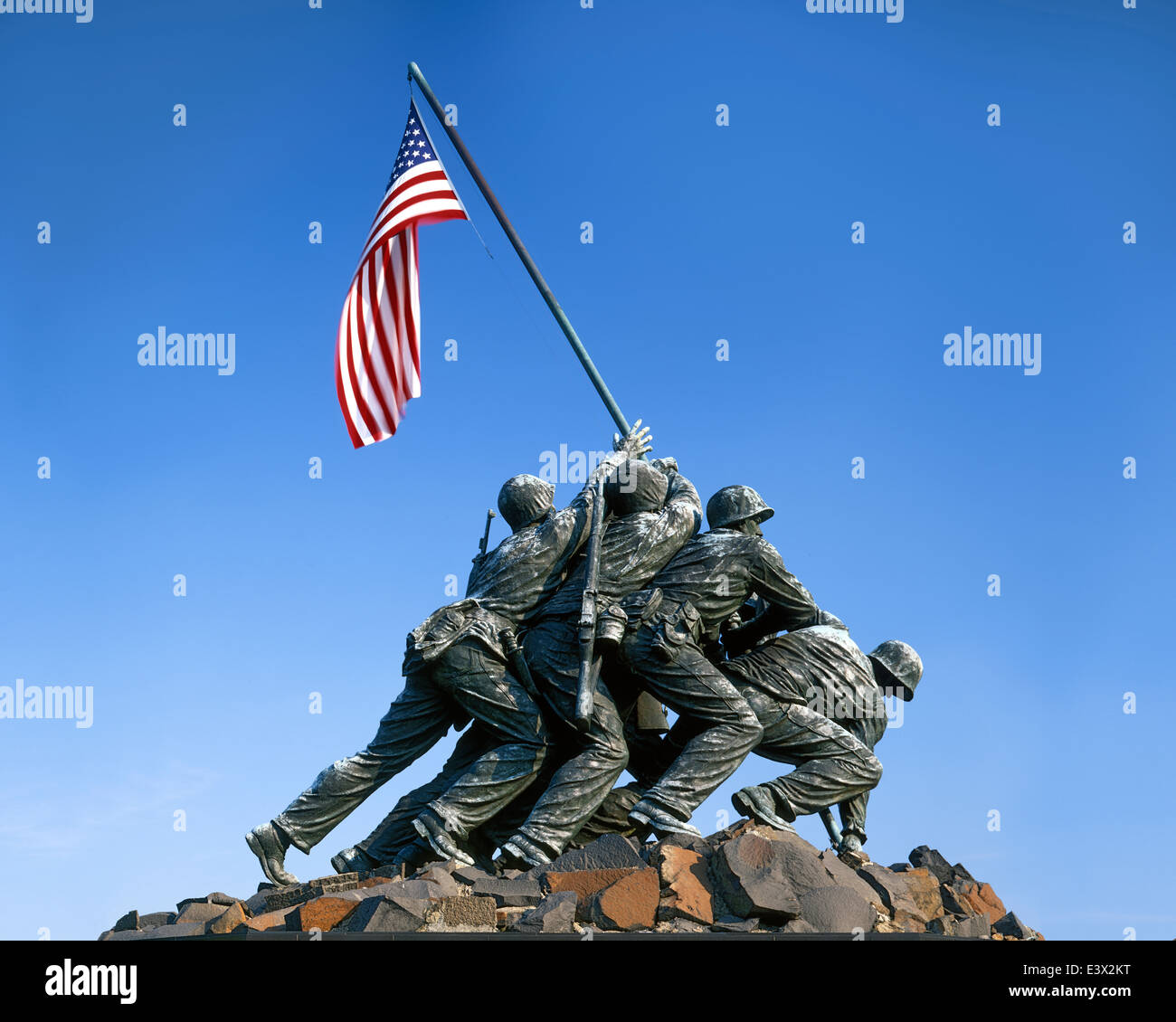Strategy Your Visit to United States Marine Corps War Memorial Arlington Virginia
Strategy Your Visit to United States Marine Corps War Memorial Arlington Virginia
Blog Article
Discover the Background Behind the USA Marine Corps Battle Memorial at Boneyard
The United States Marine Corps War Memorial, standing austere and tall at Boneyard, holds within its bronze numbers and granite base a rich tapestry of history that beckons to be discovered. As site visitors stare upon the renowned scene of the flag-raising at Iwo Jima immortalized in this monument, they are attracted into a story that transcends time and talks to the valor and sacrifice of those it honors. The story behind the production of this memorial, from its inception to the complex information of its layout and the feelings stimulated during its unveiling, weaves a story that not only honors the past yet likewise acts as a testimony to the long-lasting spirit of the Marine Corps.
The Beginnings of the Memorial

The beginnings of the United States Marine Corps War Memorial can be traced back to the results of The second world war when the idea for a monument to recognize the sacrifices of Marines was very first conceived. In 1945, Dr. Justin Mooney, a previous Marine, proposed the concept of a memorial to recognize the Marine Corps' tradition and commemorate the Marine lives shed during the Pacific project of The second world war, especially on the island of Iwo Jima. The memorial was imagined as a symbol of gratefulness to all Marines that had actually offered and a tribute to those that made the ultimate sacrifice in protection of their country.
This principle obtained energy, and in 1951, Head Of State Harry S. Truman signed an expense licensing the building and construction of the monument. The selected layout by carver Felix de Weldon portrayed the famous flag-raising on Mount Suribachi during the Battle of Iwo Jima. The monument was officially committed on November 10, 1954, the 179th wedding anniversary of the Marine Corps' beginning, and has actually given that become a symbol of the Marine Corps' solution, valiance, and devotion to the nation.
Style and Meaning of the Sculpture
Crafted by distinguished carver Felix de Weldon, the style of the US Marine Corps War Memorial captures a zero hour in American army background. The memorial features a group of United States Militaries increasing the American flag during the Fight of Iwo Jima in The Second World War. The monument stands at a towering 78 feet and is constructed from bronze. De Weldon thoroughly sculpted each of the six servicemen to stand for the variety and unity within the Marine Corps.
The flag-raising minute signifies the fearlessness, sacrifice, and camaraderie of the Marines that battled in the Pacific cinema throughout the war. The monolith's placing permits site visitors to view it from numerous angles, emphasizing the relevance of the event it commemorates. The memorial's devotion plaque births the legendary words of Admiral Chester Nimitz, acknowledging the valor of those who served in the fight.
Construction and Introduction Event
Complying with the meticulous sculpting of the six servicemen standing for diversity and unity within the Marine Corps, the building and unveiling event of the US Marine Corps War Memorial marked a considerable minute in American background. The construction of the memorial started in 1954 and was finished in 1956, finishing in a grand unveiling ceremony on November 10th of that year. The ceremony, attended by President Dwight D. Eisenhower and Vice Head Of State Richard Nixon, attracted crowds from throughout the nation to witness the commitment of this famous monolith.
The unveiling event featured armed forces processions, speeches recognizing the sacrifices of Marines, and a wreath-laying ceremony to commemorate dropped soldiers. The emotional influence of the event resonated with guests, signifying the sustaining spirit and dedication of the Marine Corps. The memorial, also referred to as the Iwo Jima Memorial, remains to stand as an icon of nerve and sacrifice, reminding all that visit of the Militaries' undeviating dedication to safeguarding liberty and freedom.

Historical Relevance and Acknowledgment
Representing endurance and valiance, the US Marine Corps Battle Memorial holds a notable place in American history, embodying the essence of sacrifice and honor. Dedicated to the Militaries that have actually fearlessly served the nation considering that the starting of the Corps in 1775, the memorial stands as an icon of fearlessness and strength (United States Marine Corps War Memorial map). The renowned picture of the raising of the flag at Iwo Jima, recorded during Globe Battle II, is immortalized in the monument, representing the steadfast spirit of the Marine Corps
The US Marine Corps War Memorial has actually gathered prevalent acknowledgment for its powerful depiction of unity and accomplishment in the face of adversity. The monument has come to be a revered icon of American army strength and the worths of commitment, obligation, and honor maintained by the Marine Corps.
Effect On the Marine Corps Neighborhood
The United States Marine Corps War Memorial stands as a unifying symbol within the Marine Corps community, symbolizing the shared worths of guts and dedication among its participants. This legendary monument serves not just as a tribute to fallen partners yet also as a resource of ideas and satisfaction for previous and current Militaries. For those within the Marine Corps neighborhood, the memorial represents a connection to the Corps' rich background and traditions, fostering a feeling of belonging and camaraderie. It works as a pointer of the sacrifices made by Marines in solution to their nation and reinforces the bonds in between individuals that have shared similar experiences and hardships. The memorial's existence instills an inner voice and honor among Militaries, encouraging them to maintain the highest possible criteria of excellence and service. In general, the influence of the US Marine Corps Battle Memorial on the Marine Corps neighborhood is extensive, enhancing the values of commitment, selflessness, and durability that define the Marine Corps ethos.
Verdict
In conclusion, the USA Marine Corps War Memorial at Boneyard stands as an helpful hints effective sign of honor and sacrifice. United States Marine Corps War Memorial Arlington Virgina. Its layout and building and construction show the rich background and traditions of the Marine Corps, while also working as a suggestion of the nerve and commitment of those that have offered. The memorial continues to hold significant historic and cultural value, motivating and joining the Marine Corps community for generations to come
In 1945, Dr. Justin Mooney, a former Marine, suggested the concept of a memorial to honor the Marine Corps' legacy and honor the Marine lives shed throughout the Pacific project of World War II, especially on the island of Iwo Jima.Following the thorough sculpting of the six servicemen representing diversity and unity within the Marine Corps, the construction and introduction ceremony of the United States Marine Corps Battle Memorial marked a significant moment in American history.The US Marine Corps War Memorial stands as a unifying symbol within the Marine Corps area, embodying the shared values of courage and commitment among its participants. Generally, the impact of the US Marine Corps Battle Memorial on the Marine Corps area is profound, reinforcing the values of commitment, altruism, and durability that define the Marine Corps principles.
In verdict, the United States Marine Corps Battle Memorial at Memorial Park stands as a powerful icon of honor and sacrifice.
Please visit one of our local supporters - Eco Bed Bug Exterminators Va
Report this page